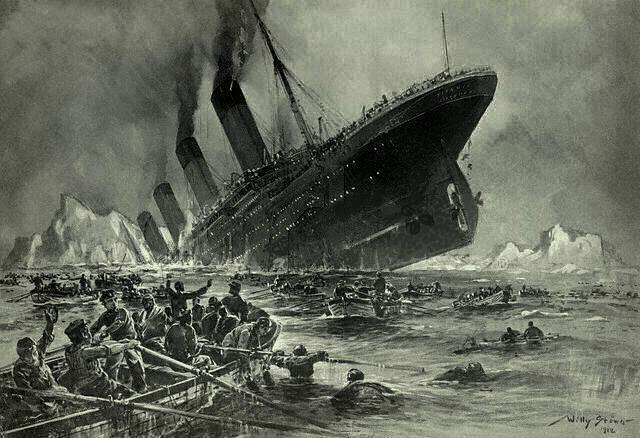1. Edgar Allan Poe Seems to Foretell Death of Richard Parker by Cannibalism

Edgar Allan Poe (U.S. Library of Congress)
In the 19th century, Edgar Allan Poe wrote “The Narrative of Arthur Gordon Pym” about a cabin boy named Richard Parker who was killed and eaten by his three shipmates after their ship sank.
In 1884, almost 50 years after the book was written, the yacht Mignonette set off from Southampton, England, for Sydney, Australia. A cabin boy named Richard Parker embarked on this voyage with three shipmates—just as in Poe’s story.
The Mignonette sank en route, and poor Parker had the same fate as his fictional counterpart.
Turtle meat initially sustained the Mignonette crewmen, as it had Poe’s characters. When the turtle meat ran out, however, and Parker was weakened after drinking sea water, his crewmates killed and ate him.

A file photo of a yacht. (Shutterstock)
2. Morgan Robertson Seems to Fortell the Sinking of the Titanic
Author Morgan Robertson wrote of the sinking of a fictional ship he called the “Titan” in 1898, which bore a remarkable resemblance to the Titanic. The Titan sank under almost the exact same conditions 14 years after the book, titled “Futility” was written.
The Buffalo News summed up the similarities in a 1998 article posted on the University of Buffalo website:
- Robertson’s Titan was 800 feet long, the Titanic 882.5.
- Both ships were all steel with three propellers and two masts.
- Each was built to carry about 3000 people.
- The gross tonnage of the Titan was 46,328, the Titanic 45,000.
- The Titan’s horsepower was 40,000, the Titanic’s 46,000.
- Each was described as the largest passenger ship ever built.
- Both were considered unsinkable until they went down in the North Atlantic.
- There were far too few lifeboats on either ship.
- The Titan was traveling at 24 knots, the Titanic 22.5.
- Both wrecks were in the month of April.
- Both stuck an iceberg on the starboard side near midnight.
3. Philip K. Dick Meets His Character’s Real-Life Counterpart

A drawing of Philip K. Dick. (Wikimedia Commons)
Popular science-fiction author Philip K. Dick wrote a book titled “Flow My Tears, the Policeman Said,” in 1970. He wrote it really quickly, carried by strong inspiration.
He later met a woman who had the same name as one of his characters. She was the same age, and her boyfriend had the same name as the character’s boyfriend. Further, she was involved in a crime ring like the character in the book, but later revealed that she was having an affair with a police officer, also like the character in the book.
The mystery goes further, as Dick describes in his 1978 essay titled“How to Build a Universe That Doesn’t Fall Apart Two Days Later.”
“Certainly, these are odd coincidences. Perhaps I have precognition. But the mystery becomes even more perplexing; the next stage totally baffles me. …
“One afternoon I was talking to my priest—I am an Episcopalian—and I happened to mention to him an important scene near the end of the novel in which the character Felix Buckman meets a black stranger at an all-night gas station, and they begin to talk. As I described the scene in more and more detail, my priest became progressively more agitated. At last he said, ‘That is a scene from the Book of Acts, from the Bible!’”
Dick checked and found the events matched up in great detail and even the names were repeated in his story and in the Bible.
RELATED: Moon Contributed to Titanic Sinking?—'Once-in-Many-Lifetimes’ Coincidence
RELATED: 13 Crazy Coincidences That Could Make You Believe in Fate
RELATED: 4 Funny, Weird Coincidences: They’ll Make You Laugh, They’ll Make You Think





